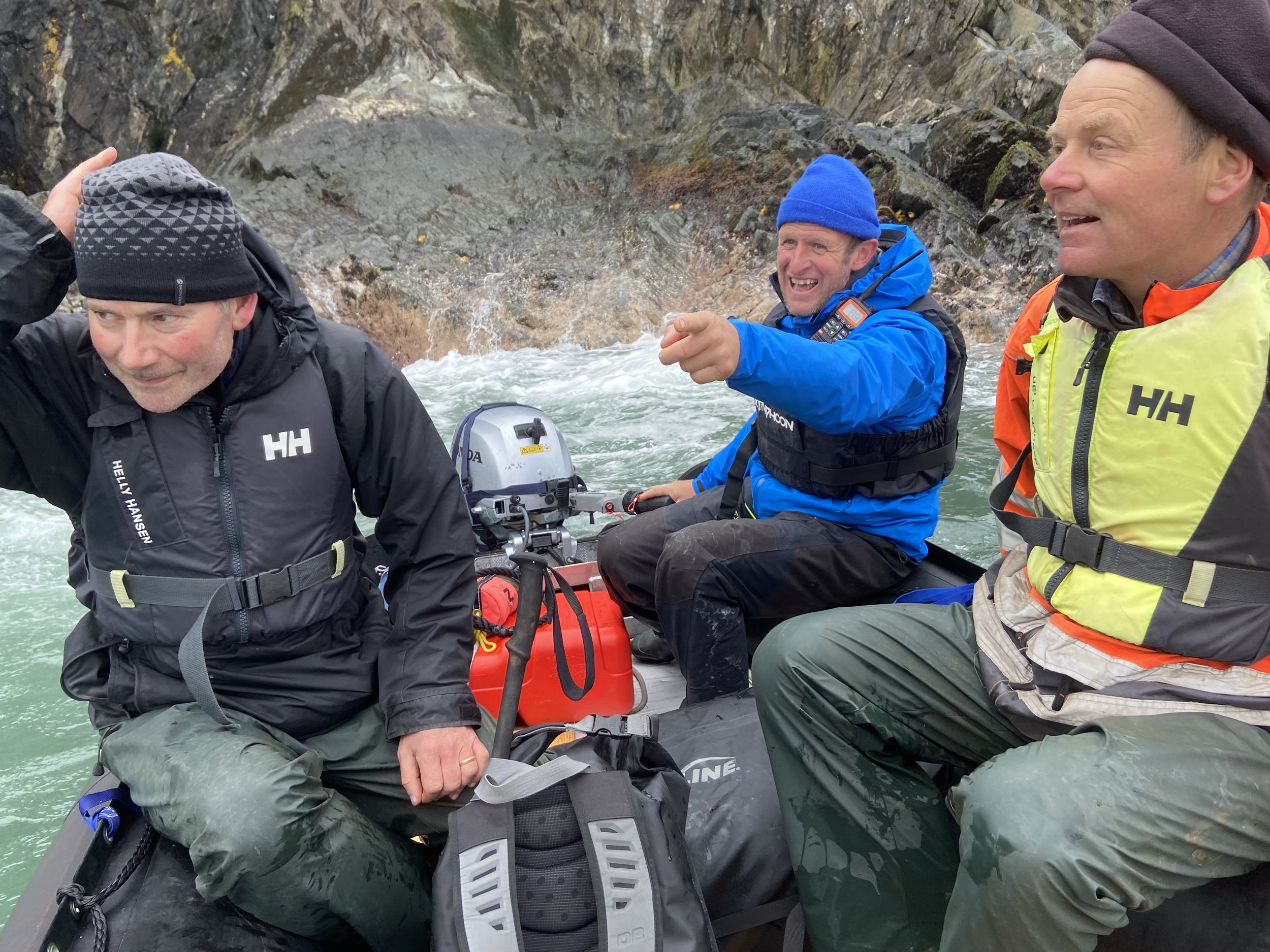South Georgia Wandering Albatross Survey (III)
Wanderers on Granat Point, South Coast.
Five lap tops are opened and lit up on the salon table. Furrowed, no nonsense brows focus on their crib sheets. They are not to be interrupted with frivolities like what’s for dinner. Our researchers, have come to the end of our principle objective, the survey of 30 wandering albatross nesting sites on South Georgia -that were logged in the surveys of 2004 and 2015 (excluding the largest repository on Bird Island which is monitored by the British Antarctic Survey)-. They are checking and double checking their data loggers, drone footage, trackers on phones and scribbles in their notebooks, comparing the numbers and drawing some conclusions, along with accepting some assumptions. So how are the wandering albatross doing? Read on for the results.
Queen Maude Bay.
Kelvin and Dion launching the drone for a survey of Petrel Island.
Justino briefing Jen and Sally on the day's weather.
It's February 10th, it’s pouring rain and katabatic ball busting winds make this a good day to collate the information and sum up. We are at anchor in kelp off the abandoned whaling station of Husvik in Stromness Bay. Just around the corner at the Stromness station is where Shackleton, Worsley and Crean strolled in and knocked on the door of the manager’s ‘villa’ after their epic trek across the spine of the island in April 1916.
At the beginning of February we bottomed out at the south end of the island having toured the Drygalski Fjord (on a rare fine day), landing on several headlands and islets. This was interesting terrain for our botanical specialist Kiwi Kelvin to document the vegetation establishing on these features from the relatively recent retreat of the Jenkins and Risting Glaciers. The beaches and accessible slopes surrounding the Tolkienesque Larsen Harbour were also surveyed for base line data of flora and fauna, before spending a quiet night at anchor in this well known refuge, relatively secure in a pool surrounded by kelp.
Tor raising the anchor on a windy morning in Stromness Bay.
Dion spots something!
At this juncture we still had three sites to visit at the bottom of the south coast and another prime site in the north central section. This was done in short order with a period of calm, sheltered from the swell by an army of icebergs right along this stretch of shoreline. We always had a weather eye out to re-visit the jewel of Annenkov Island, to land on the northwest section in clear conditions instead of the dense fog day the team experienced on the prior count some weeks ago. Possibly some albatross were missed! Although desirable, this was not to be with the weather systems fluid and short lived. We could not rely on a clear spell with risk of wasting precious time transiting there and back from the main coast.
Vinson's skipper Justino at the wheel.
In a whirlwind tour with the time available we made visitor site survey stops along the northeast coast in conjunction with more avian flu observation and sample taking. There is definitely avian flu all over the island, but some sites have fared better, some worse. Young elephant seals and male fur seals seem to have been the hardest hit, while penguins have been relatively unaffected, for now. The jury is out on how this pandemic will progress. It is unpredictable and will have to run its course.
Rendezvous with fisheries patrol vessel Pharos, dropping avian flu sample for delivery to UK.
Sally descending to the main beach at Will Point, Royal Bay.
Day before yesterday was our last day at Grytviken completing formalities with the government officers at King Edward Point. We loaded equipment and sustenance for one month for Ken, Sally and Kelvin who will be moving into the historic manager’s villa at Husvik in two day’s time. They will be engaged with alien vegetation control in the Stromness Bay area, an annual, on-going project.
Vinson on the Tijuca Jetty, Grytviken.
On the 14th we sail for Stanley, the long way home, and as usual, looks like it’s against a howling westerly. OK, you, the reader, has waited long enough.
The results: The correction factors for breeding failure rate still need to be applied so numbers may change slightly. But, the team counted over 550 breeding pairs, excluding Bird Island. In 2004 there were 592 so this means roughly a 6% decline in 20 years, however if you look at the ten year data from 2015, most of the sites surveyed on this project have increased slightly, which was welcome news indeed.
Full details to come in a scientific paper to be published soon.
Job done!
Skip Novak
Co-Expedition Leader













